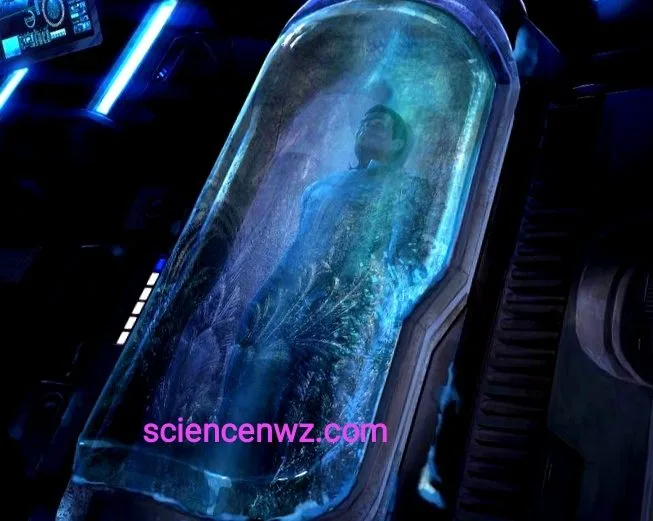Immortality Through Cryonics: Unlocking the Secrets of Suspended Animation
In the quest for eternal life, humans have always yearned for the unattainable – immortality. While the concept might seem like the stuff of science fiction, advancements in cryonics are gradually turning it into a tangible reality. Imagine a world where individuals can pause the aging process and be revived in the distant future, potentially gaining a new lease on life.
What is Cryonics?
Cryonics is a scientific concept involving the preservation of deceased bodies or brains at ultra-low temperatures with the goal of potentially reviving them in the future. Using advanced techniques like cryoprotectants and vitrification, the aim is to prevent cellular damage during freezing. Proponents believe that future medical breakthroughs could address the original cause of death and repair tissue damage, offering a chance for revival. However, the feasibility of this process remains debated within the scientific community due to challenges like ice crystal formation and the speculative nature of future revival technology. Ethical and societal implications also surround this pursuit of post-mortem preservation.
What is Biological Immortality?

Biological immortality, from a scientific perspective, refers to the hypothetical condition where an organism does not experience senescence, the natural process of aging and eventual death. Unlike the limited lifespan observed in most organisms, a biologically immortal entity would exhibit no signs of deterioration or decline in cellular and physiological functions over time. This concept challenges the traditional understanding of mortality and has garnered attention within fields such as biology, genetics, and gerontology.
You Can also read: Need of Semiconductor Technology in India
In biological terms, immortality would necessitate the cessation of the molecular and cellular processes that lead to aging. This could involve preventing telomere shortening, which is a key factor in cellular aging, and mitigating accumulated damage to DNA, proteins, and other cellular components. Additionally, addressing issues like oxidative stress and inflammation would be crucial to maintaining long-term cellular health.
It’s important to note that biological immortality, while theoretically fascinating, poses significant scientific, ethical, and philosophical questions. The intricate balance of cellular functions, the interactions with the environment, and the potential consequences for ecosystems must all be considered. Moreover, the implications for population dynamics and resource allocation warrant careful examination.
Achieving biological immortality remains speculative and faces formidable challenges. While scientific advancements continue to extend lifespan and improve health, the idea of indefinitely halting the aging process requires a profound understanding of complex biological systems and a careful consideration of the broader implications.
You can Also read : Zero Gravity Places in Earth
Top 10 Ways of Human Immortality :
1. Genetic Engineering
2. Regenerative Medicine
3. Artificial Intelligence and Mind Transfer
4. Cryonics
5. Nanotechnology
6. Telomere Extension
7. Symbiosis with Technology
8. Consciousness Upload
9. Advanced Medical Treatments
10. Preventing Age-Related Diseases
The Science Behind Cryonics
Cryonics, a field that combines science and hope, delves into the intricate science of preserving life beyond death’s door. At its core, cryonics is a process that involves the preservation of a person’s body at incredibly low temperatures immediately after legal death. The aim? To slow down cellular decay to such an extent that a person’s body – or even just their brain – could potentially be revived and restored to its former state at a later time.
Preserving Cellular Integrity
The preservation process begins as soon as possible after legal death is pronounced. The body is cooled down using a carefully designed technique that prevents the formation of ice crystals within the cells. These ice crystals have the potential to rupture cell membranes and cause irreparable damage, which is why controlling the freezing process is crucial. The use of cryoprotectants, specialized chemicals that help prevent ice crystal formation, further aids in preserving cellular integrity.
Vitrification: A State of Suspended Animation
In more recent years, vitrification has emerged as a technique to minimize cell damage during freezing. Instead of forming ice crystals, the body’s tissues are transformed into a glass-like state, preserving the cellular structure in a sort of suspended animation. This approach offers the potential for better preservation and minimizes the risk of damaging ice crystals.
Navigating the Thawing Process
Reviving a cryopreserved body is an intricate process that involves carefully thawing the body while simultaneously addressing potential cellular damage. Rapid rewarming can lead to cracking or even explosions within cells due to the formation of ice crystals. Therefore, the thawing process requires the same level of precision and care as the preservation process.
The Bridge to the Future: Medical Advancements
Central to the concept of immortality through cryonics is the expectation that future medical technology will be capable of reversing the original cause of death and repairing any cellular damage that occurred during the preservation process. While this idea may seem far-fetched, it’s grounded in the belief that as science and medicine progress, previously incurable conditions may become treatable, and the revival of preserved bodies might become a reality.
The Ongoing Debate and Ethical Considerations
Cryonics, however, is not without its skeptics. The scientific community remains divided on its feasibility and ethics. Critics point to the complexity of preserving delicate human tissues, the potential for irreversible damage, and the ethical concerns of disrupting the natural cycle of life and death. Ethical discussions also extend to the potential implications of a select few gaining a second chance at life, potentially leading to societal imbalances.
The Journey from Fiction to Reality
Although cryonics remains a topic of debate in the scientific community, there have been significant advancements in the field. Companies and organizations are offering services to preserve bodies or brains in a state of suspended animation, awaiting a future where technology can bring them back to life. While the concept of immortality through cryonics is still largely unproven, enthusiasts believe that future medical breakthroughs could make it a viable option.
Ethical and Philosophical Considerations
The concept of achieving immortality through cryonics raises ethical and philosophical questions. Is it morally justifiable to disrupt the natural course of life and death? What implications does it have for society if a select few gain a second chance at life? As we ponder these questions, it’s important to remember that cryonics is an evolving field, and its potential impact on society and individuals is still largely unknown.
Challenges and Hurdles in Cryonics: Navigating the Icy Path to Immortality
The pursuit of immortality through cryonics is a journey fraught with formidable challenges. One of the most pressing hurdles is the risk of cellular damage during both freezing and thawing processes. The formation of ice crystals, despite cryoprotectants and vitrification techniques, remains a persistent threat, potentially causing irreparable harm to delicate tissues. Moreover, the assumption that future medical advancements will possess the capability to revive cryopreserved bodies rests on conjecture, making it a speculative premise.
Societal acceptance and resource allocation pose additional challenges. Cryonics requires substantial financial investment for both the preservation process and maintaining storage facilities. Convincing society of its legitimacy while addressing ethical concerns surrounding disrupting the natural life cycle adds a layer of complexity. Striking a balance between technological optimism and practical feasibility is essential as cryonics treads the uncharted territory between science fiction and reality. Only time will reveal whether these challenges can be surmounted, propelling the pursuit of immortality forward or relegating it to the realm of ambitious speculation.
Exploring the Boundaries of Possibility
While cryonics offers a tantalizing glimpse into the realm of immortality, it’s crucial to approach the topic with a mix of fascination and skepticism. As scientific advancements continue, the boundaries of possibility may expand, bringing us closer to understanding whether the dream of living forever can transcend the pages of science fiction.
In conclusion, the concept of immortality through cryonics is a complex and intriguing topic. It challenges our understanding of life, death, and the role of technology in reshaping our future. While we can’t predict with certainty what lies ahead, the pursuit of knowledge and exploration of the unknown remain integral to human progress.
Immortality is Possible?
Achieving true immortality remains a speculative topic. While medical advancements continue to extend human lifespans, factors such as cellular deterioration and the unpredictable nature of aging pose significant challenges. Some scientists explore avenues like genetic engineering and regenerative medicine, but ethical, philosophical, and practical concerns remain. Achieving absolute immortality, where one never dies, is highly uncertain due to the complex nature of life and the universe. However, the quest for longevity and improved health continues to be a focus of scientific inquiry and technological innovation.

4 thoughts on “Immortality Through Cryonics”